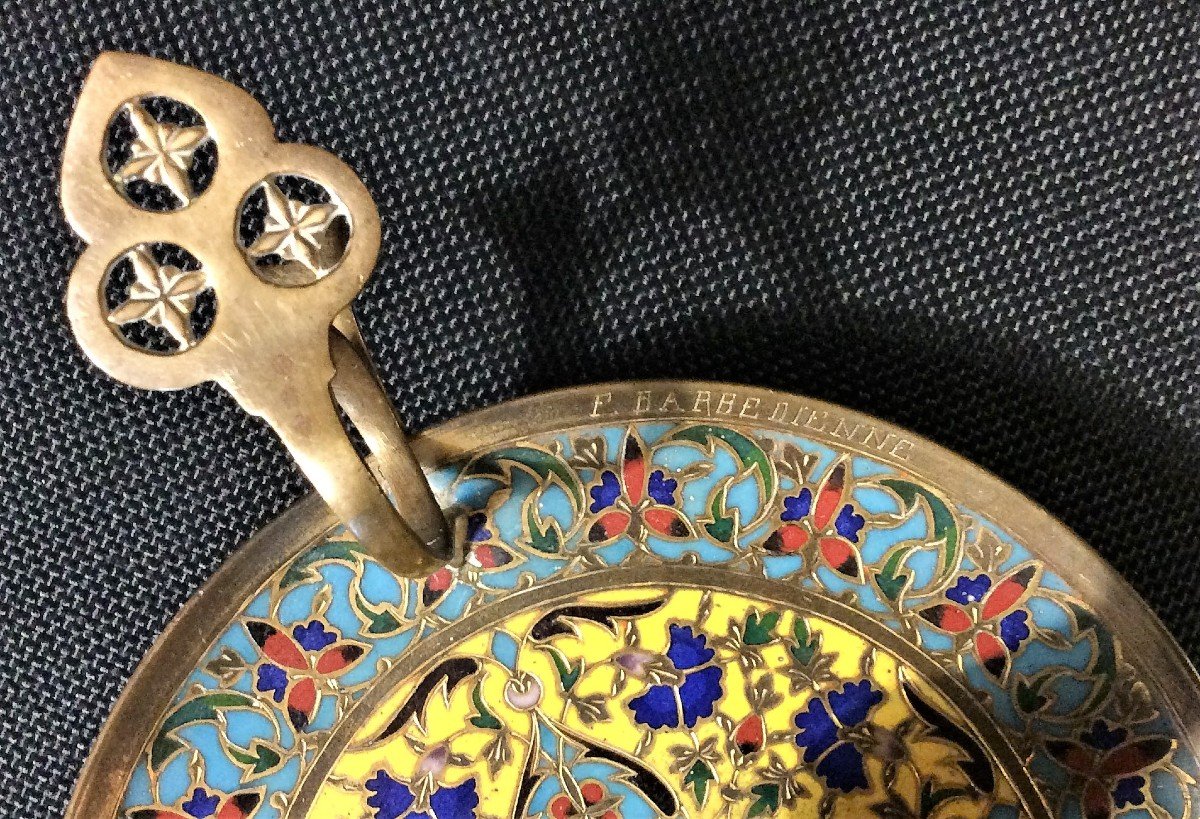Ferdinand BARBEDIENNE (Paris, 1810-1892) HAND CANDLE HOLDER Bronze, cloisonné enamels H. 10 cm, Diam. 14.5 cm Signed Ferdinand Barbédienne (1810 - 1892) Son of a modest Norman farmer, Ferdinand Barbedienne made his first fortune in a wallpaper business located at 24 and 26, rue Notre Dame des Victoires in Paris. In 1836, the engineer, mechanic and toolmaker Achille Colas (1795-1859) invented a mechanical process for reducing sculptures in the round, by improving the sculptors' pantograph, for which he filed a patent in 1837. Ferdinand Barbedienne joined with Achille Collas in 1838, founding the Société A. Collas & Barbedienne, for the production and marketing of reduced copies of sculptures using various materials, such as alabaster, wood, bronze, ivory or soapstone . They reproduce, in bronze and in reduction, a large number of sculpted works, preserved in European museums, intended to adorn modern interiors. In addition, they developed new chemical processes for patinating bronzes. They present a reduction of the Venus de Milo at the National Exhibition of 1839, which earns them a silver medal. The fundamental idea of Ferdinand Barbedienne is the democratization of Art, by making financially accessible faithful reproductions of masterpieces. The themes chosen are often allegorical and draw heavily on the ancient repertoire. He is then called the “Gutenberg of statuary”. Under publishing contract with the artists, thus laying the legal foundations of a new industry, Ferdinand Barbedienne reproduces the works of contemporary sculptors such as François Rude in 1843, Carrier Belleuse, Barye, Guiillemin, Frémiet, Gardet, Jacquemert, Mène, Chaput, Stecchi, Alzelin and created many models of bronze furniture, champlevé enamels, or cloisonné enamels, in collaboration with the enameller Serre (1837-1906), etc.


































 Le Magazine de PROANTIC
Le Magazine de PROANTIC TRÉSORS Magazine
TRÉSORS Magazine Rivista Artiquariato
Rivista Artiquariato